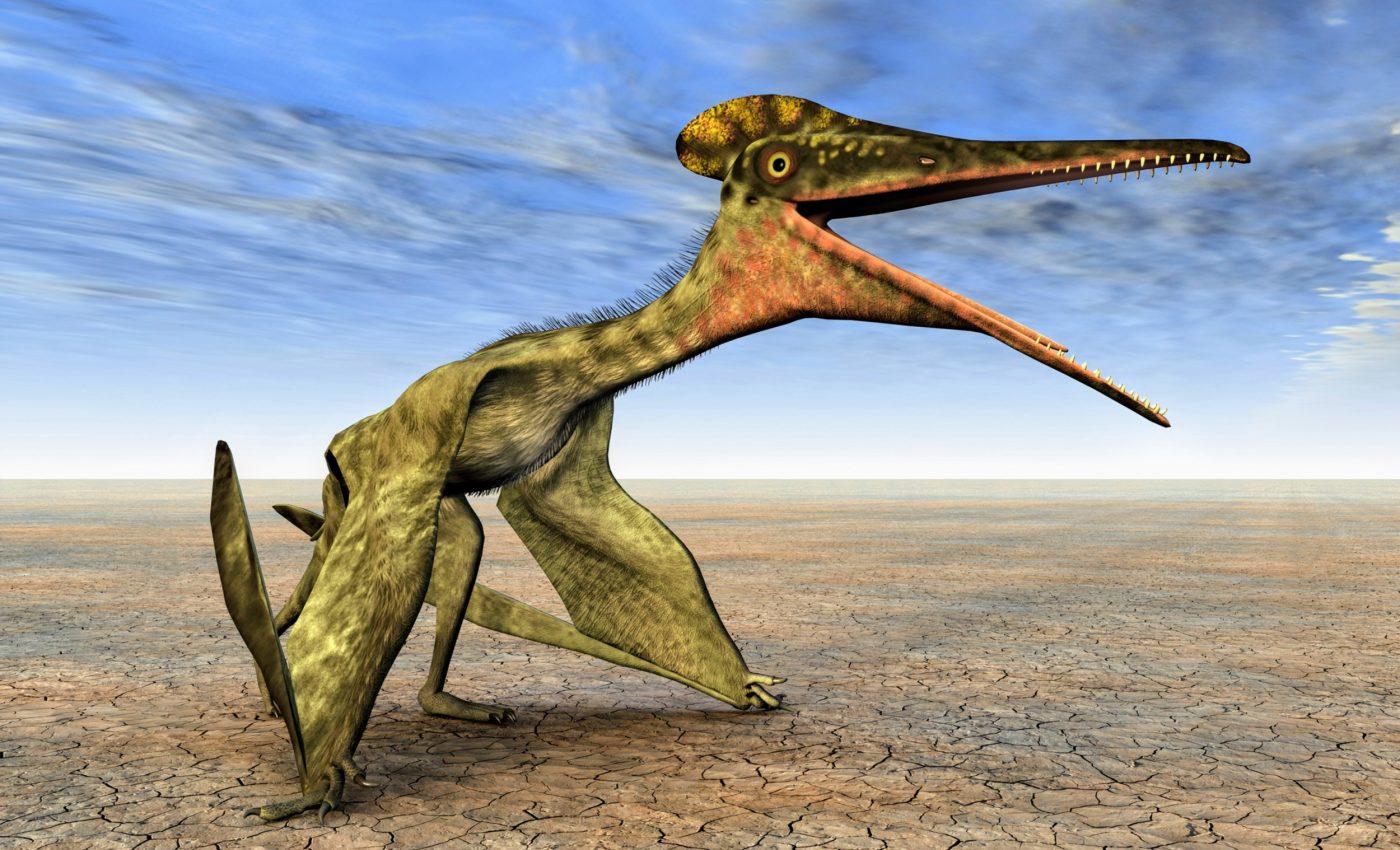
Cracking the code of pterosaur flight: Soaring vs. flapping
A pterosaur, one of the prehistoric giants of the skies, flew by either flapping its wings or soaring, according to a new study published in the Journal of Vertebrate Paleontology.
For years, scientists have debated whether the largest pterosaurs could fly at all. However, “remarkable” and “rare” three-dimensional fossils of two large-bodied azhdarchoid pterosaur species, including one new-to-science, now suggest that not only could the largest pterosaurs fly, but their flight styles could vary significantly.
The study was led by researchers from the University of Michigan, the Natural Resources Authority, Yarmouk University in Jordan, and the Saudi Geological Survey.
Three-dimensionally preserved pterosaur bones
The fossils, from the late Cretaceous period (approximately 72 to 66 million years ago), were exceptionally preserved in 3D at two sites within a nearshore environment on the ancient landmass of Afro-Arabia.
“The dig team was extremely surprised to find three-dimensionally preserved pterosaur bones, this is a very rare occurrence,” noted Dr. Kierstin Rosenbach, lead author from the University of Michigan.
Since pterosaur bones are hollow and fragile, they are typically found flattened. “With 3D preservation being so rare, we do not have a lot of information about what pterosaur bones look like on the inside,” she added.
CT scans reveal flight mechanics
Using high-resolution computed tomography (CT) scans, the team analyzed the internal structures of these wing bones.
The scans revealed that Arambourgiania philadelphiae, an already-known giant pterosaur with a 10-meter wingspan, exhibited spiral ridges inside its humerus, resembling those in the wing bones of vultures. These ridges likely resisted torsional loadings associated with soaring flight.
“The ridges in Arambourgiania were completely unexpected, we weren’t sure what we were seeing at first!” noted Dr. Rosenbach. “Being able to see the full 3D model of Arambourgiania’s humerus lined with helical ridges was just so exciting.”
In contrast, the newly discovered species, Inabtanin alarabia, had flight bones adapted for flapping flight, with internal struts similar to modern flapping birds.
“The struts found in Inabtanin were cool to see, though not unusual,” said Dr. Rosenbach. With a five-meter wingspan, this pterosaur’s bone structure indicates it was likely adapted for resisting bending loads during flapping.
Understanding pterosaur flight
The discovery of varying flight styles opens exciting new discussions about how pterosaurs lived and the correlation between body size and flight mechanics.
“There is such limited information on the internal bone structure of pterosaurs across time, but looking at other flying vertebrates, we can see that flapping is the most common flight behavior,” said Dr. Rosenbach.
Professor Jeff Wilson Mantilla from the University of Michigan and Dr. Iyad Zalmout from the Saudi Geological Survey, co-authors of the study, found the fossils in Jordan in 2007.
“The variations likely reflect responses to mechanical forces applied on the pterosaurs’ wings during flight,” noted Professor Mantilla.
A new framework for future studies
“This study provides a framework for further investigation of the correlation between internal bone structure and flight capacity in pterosaurs,” said Dr. Rosenbach.
With these discoveries, scientists hope to expand their understanding of vertebrate flight by examining more fossils and building on the knowledge of these prehistoric giants.
The legacy of pterosaurs
Although pterosaurs ruled the skies millions of years ago, their legacy continues to inspire scientists today.
These creatures, the first vertebrates to achieve powered flight, ranged in size from small, bird-like species to massive giants like Quetzalcoatlus, which had wingspans rivaling modern aircraft. Their hollow bones, lightweight frames, and varied flight adaptations allowed pterosaurs to conquer diverse environments, from coastal cliffs to inland forests.
Despite their extinction, pterosaurs offer invaluable insights into evolutionary biology, biomechanics, and flight mechanics.
Ongoing discoveries, like those from this recent study, deepen our understanding of how flight evolved and what environmental pressures shaped the development of these remarkable creatures.
The study of pterosaurs also contributes to broader scientific fields, helping researchers apply ancient lessons to modern questions, such as the physics of flight and the evolution of other flying animals, including birds and bats.
As more fossils are uncovered and new technologies emerge, the flight secrets of pterosaurs will continue to be unraveled, providing glimpses into the world of the prehistoric skies.
The study is published in the journal Journal of Vertebrate Paleontology.
—–
Like what you read? Subscribe to our newsletter for engaging articles, exclusive content, and the latest updates.
Check us out on EarthSnap, a free app brought to you by Eric Ralls and Earth.com.
—–













